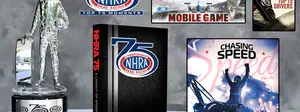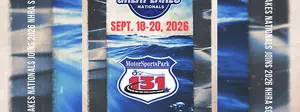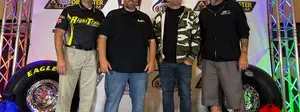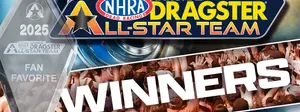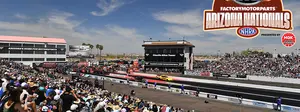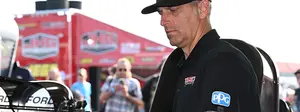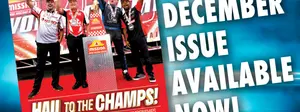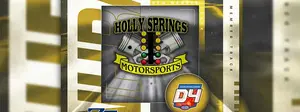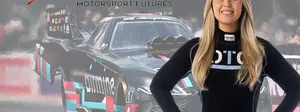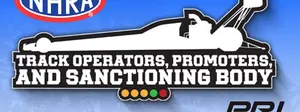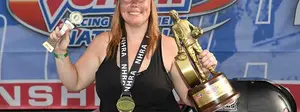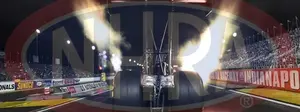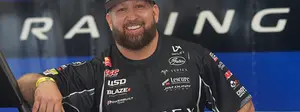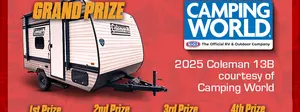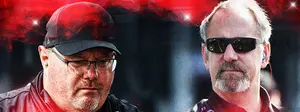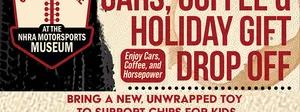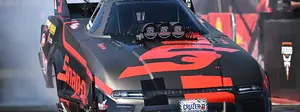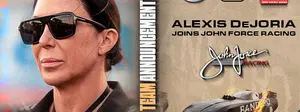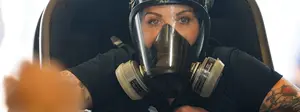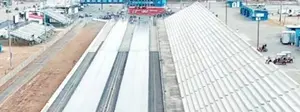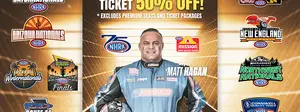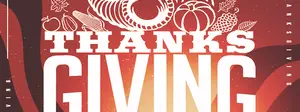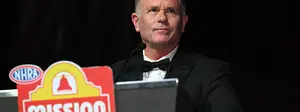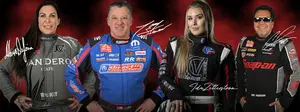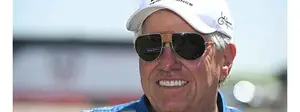

Holley National Hot Rod Reunion presented by AAA to honor legends of racing
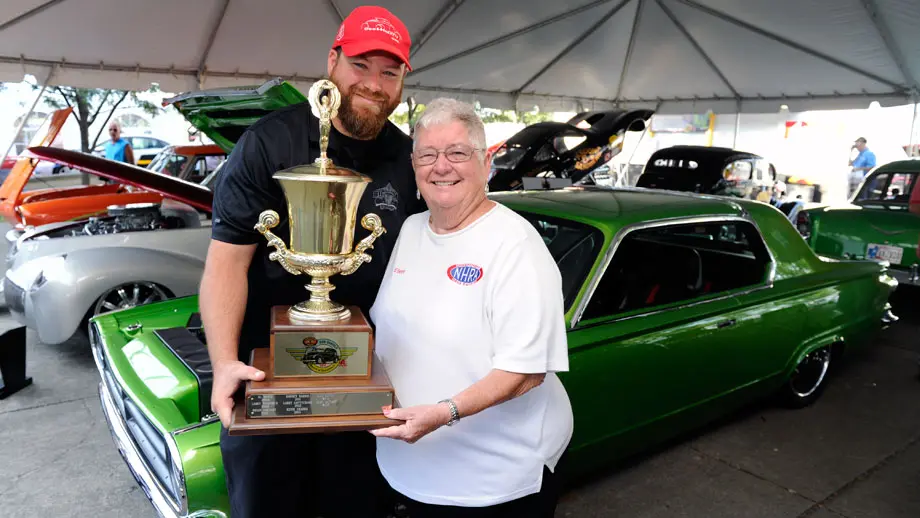
The Holley National Hot Rod Reunion presented by AAA (June 15-17) is not only a sprawling celebration of automobiles but also pays honor to those who were instrumental in the growth of racing. On Friday, June 16, event grand marshal Eileen Daniels and all the honorees will be celebrated at an event at Beech Bend Raceway Park.
They will all be celebrated during the course of the weekend and a special reception for the group will take place at Beech Bend Raceway Park at the conclusion of racing. The gathering will be held in the Honoree Reception tent located across from Holley, inside the vendor oval. This star studded reception at Beech Bend Raceway Park will allow the growing number of racers, hot rodders, and enthusiasts who continue to support the Holley National Hot Rod Reunion take part in all of the festivities without having to leave the track.
Daniels has seen NHRA grow to become the world’s largest motorsports sanctioning body firsthand and has been part of the sport for six decades.
She married her late husband, Bob, just out of high school in 1953 and a short time later they attended their first official NHRA event when the Safety Safari came to town. In May 1956 at the Safari event held at Stout Field in Indianapolis, NHRA Founder Wally Parks introduced himself to the husband-wife racing team with the matching embroidered shirts. Soon after, Bob got a letter from Parks inviting him to become a regional advisor. He accepted the volunteer position, and a corner of their kitchen became the office. Parks liked to say that when he hired a man for a job, he got the wife as a bonus. That was certainly the case with Eileen.
They both worked at the ’59 Nationals in Detroit, and Bob as a racer set class low e.t and top speed. It was their last race because that winter another letter from Parks asked Bob to be the first North Central Division Director. Bob became the face of NHRA to racers and track operators, and Eileen provided administrative support.
Bob was instrumental in the design and building of Lucas Oil Raceway at Indianapolis, which became home to the U.S. Nationals in 1961. In 1979, NHRA purchased the track, and once more Parks prevailed on Bob to become general manager. The next two decades certainly broadened Bob and Eileen’s racing horizons and Eileen was right alongside Bob, handling administrative and hospitality duties.
After retiring to Florida in 1997, the Danielses were asked to organize an event for the growing nostalgia drag racing market. Using their experience and contacts, the Danielses worked with the Wally Parks NHRA Motorsports Museum presented by Automobile Club of Southern California to create the Holley National Hot Rod Reunion presented by AAA Insurance, NHRA Motorsports Museum. In 2001, they were inducted into the International Drag Racing Hall of Fame. Bob passed on in 2007, but Eileen continued her involvement by hosting the Reunion Legends Tent. Earlier this year, Eileen became just the fourth woman to receive the Patricia Garlits Memorial Award. The award named for Don Garlits’ late wife specifically honors a woman involved with drag racing who has exhibited a lifetime of selfless devotion to the growth and betterment of the sport. That description fits Eileen Daniels perfectly.
Also feted during the event will be honorees that were major influencers during the early days of the sport.
Family names like Kalitta and Force are somewhat common in drag racing. But it’s uncommon to find three generations of a family still active like the Hilton clan. Beginning with patriarch John through son Bobby and grandson Tyler, the Hiltons are a hardcore hot rodding family. Also, consider that Tyler’s grandparents and Bobby’s in-laws are Hall of Fame drag racers Jim and Alison Lee.
John began in the Cincinnati area in the late ’50s with street-driven hot rods, moving up to a B/Altered roadster running at local strips. The hook was set, and John moved on to a series of gas dragsters. Son Bobby was around racing his entire life and at age 16 drove his dad’s Top Fueler before he even had his street driver’s license. Bobby’s skills were obvious, and the Lees asked him to drive their car. Bobby moved to the Lees’ farm, and the team won the 1979 Division 2 Top Fuel crown and divisional events in Gainesville and Reading.
After two years, Bobby went home and took the Lees’ daughter, Diane, with him. They were married in 1981, and third-generation racer Tyler was born in 1990. Naturally, Tyler also wanted to try drag racing. Licensed at Frank Hawley’s Drag Racing School, he began in 7.0 Pro. Tyler has since moved up to Nostalgia Top Fuel with the Lees heavily involved. Painted identically to the Lees’ last front-engine car, Great Expectations III proudly continues the Hilton family legacy.
Danny and Wayne Jesel were dominant competitors in the Division 1 Sportsman ranks from New Shrewsbury, N.J., during the 1960s and 1970s and have gone on to become major players within the high-performance aftermarket industry with their highly renowned Jesel Valvetrain business.
Their careers started in 1962 when Danny, then 21, opened a gas station in New Jersey that became a favorite hangout for many of the local racers. Wayne, then 13, spent much of his time at the station, helping out with the work. He eventually became the designated driver when they began racing, while Danny began building engines for speed shop entrepreneur Bob Duffy of Red Bank, N.J. Before long, they began to collaborate with other East Coast innovators, including Jere Stahl, Dick Moroso, and Bill Jenkins.
While Wayne went on to drive cars of other racers with which he partnered, Danny opened the Competition Machine Service business in 1969, which produced a variety of aftermarket products. The operation grew quickly, and in 1974, the Jesels built the landmark CMS Camaro D/Altered that was essentially a Pro Stocker designed to race in Comp.
Danny founded Jesel Valvetrain in 1980 with Wayne joining the operation at the end of the decade. They returned to motorsports competition with a Busch Grand National two-car team in 2002, then took a 2005 Dodge Ram quad-cab pickup truck to Bonneville, where they set seven records, the fastest at 262 mph.
Also honored will be a racer best known as Hubert Platt’s partner on the Ford East Coast Drag Team and also as one of most colorful racing personalities from the Deep South. Longtime Rome, Ga., resident Randy Payne began competing at age 14 in the mid-1950s when he won a couple of drag racing state championships before he had earned his driver’s license.
Payne’s big break came prior to the 1969 season when he attended a meeting at Ford headquarters with Platt. While socializing with many of the Ford factory representatives, Payne’s outgoing personality caught the eye of Ford executive Lee Iacocca, who appointed him as Platt’s co-driver for the team. Payne was given a new SS/J Ford Torino Cobra Jet to drive, and he made the most of this opportunity by scoring multiple class wins and setting national records at NHRA national events. Sadly, Payne suffered fatal injuries in a car accident at the age of 76 on April 19, just days after learning that he was named as one of the Lifetime Achievement honorees for the 2017 NHRA Motorsports Museum Holley National Hot Rod Reunion presented by AAA Insurance.
Mark Williams’ involvement in drag racing covers all the bases. He began in the late ’50s with an Olds-powered ’34 Ford coupe. By 1960, he had driven and built his own dragster chassis — out of old driveshafts. A trained machinist, Williams worked at Denver legend John Bandimere Sr.’s Speed Shop. With the help of fellow employees and Strippers Car Club members Ron Bement and Frank Petersen, Williams began building a second dragster chassis. Finished in his home garage, it was quickly sold to Colorado Hall of Famer Roy Golightly for the grand sum of $924. Williams remembers the exact figure to this day because it was enough money to obtain the equipment necessary to open his own race car shop in 1963.
Along with building, Williams continued his driving career partnered with Bill Rice and Larry Frazier. Rice and Williams ruled the Rockies in the mid-1960s. In 1968, Williams won a Greer-Black-Prudhomme-like 90 percent of his races and set the Colorado land-speed record of 231 mph. With Frazier, Williams became the NHRA 1974 Division V Top Fuel champion. Some sources say that Williams built an estimated 150 race cars. He modestly says it was more like 135.
Though female drivers in the nitro-burning Top Fuel and Funny Car ranks have been on the current scene for quite some time, that wasn’t the case back in the 1960s when Della Woods began to compete. Woods not only had to overcome the initial disapproval of the sanctioning bodies, which felt that the nitro categories were too dangerous for women, but she also competed without the benefits of a major sponsor for the duration of her career.
Woods and her younger brother, Bernie, grew up near Detroit and became fascinated with the local drag racing activities. After Bernie had acquired the ’63 Dodge Polara with a 426-cid Max Wedge that had formerly been driven by Al “Lawman” Eckstrand in 1964, he put Woods in the car, and she won a Powder Puff Derby title at Detroit’s Motor City Dragway. This ignited an unquenchable passion for competitive driving that would last for decades.
Bernie converted the Polara into a Funny Car in 1966 with which Woods earned her license, but it was later rescinded by the NHRA. But thanks to the similar efforts of another female competitor, Paula Murphy, who was assisted her sponsor, Andy Granatelli of STP, both Woods and Murphy, along with other female competitors that were to follow were allowed to compete.
After Bernie retired from racing in 1972, Woods began racing with her future husband, De Nichols. In addition to providing mechanical skills, Nichols also managed to provide enough funding to enable Woods to realize her lifelong dream of competing at NHRA national events on a regular basis during the early 1980s. Two high points of this stage of her career took place during the 1985 season when she became the first woman to make a five-second Funny Car run and also the first to reach the semi’s in eliminations, achieving the latter at the 1985 Keystone Nationals.
Tickets for the 15th annual Holley National Hot Rod Reunion® presented by AAA Insurance are on sale now to the general public. Tickets for the reunion purchased before June 9 are $65 for a three-day pass or $25 for a single day. Children 15 and under are free with a paid adult. AAA members can save even more on this event by entering their first three digits of their membership card at checkout. Tickets can be purchased at www.NHRA.com/HotRodReunion.
























